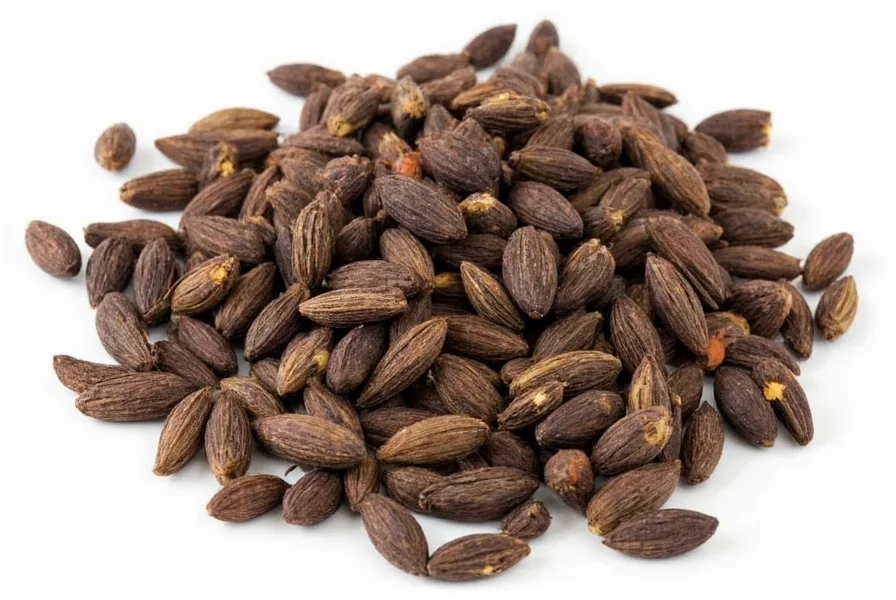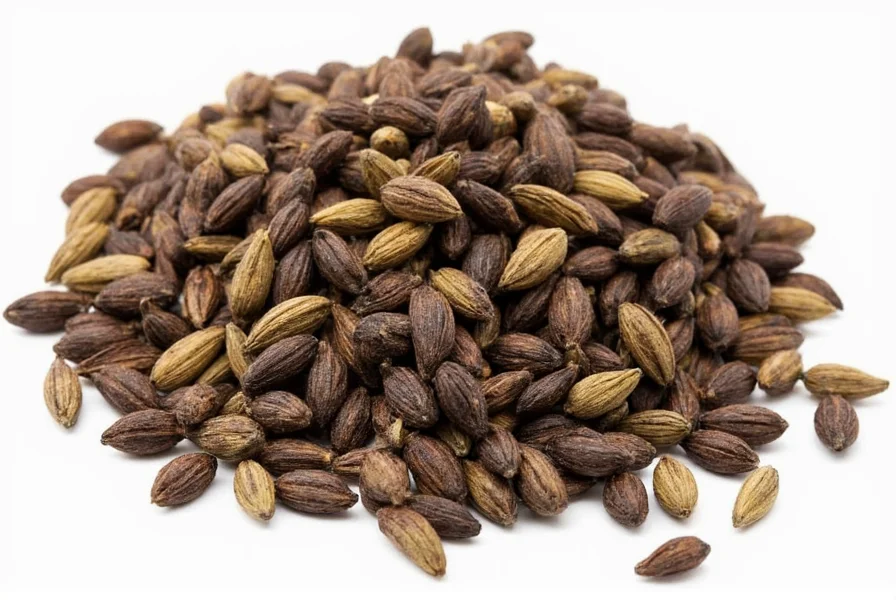When exploring the world of spices, few ingredients offer the distinctive character of black cardamom pods. These wrinkled, dark brown pods deliver a complex flavor profile that sets them apart from their more common green counterparts. Understanding how to properly select, store, and use black cardamom can transform your cooking, especially when preparing dishes that benefit from its unique smoky depth.
What Exactly Is Black Cardamom?
Black cardamom (Amomum subulatum or Amomum costatum) comes from a different plant family than green cardamom (Elettaria cardamomum). While green cardamom grows in tropical climates like India's Western Ghats, black cardamom thrives in the cooler Himalayan regions of India, Nepal, and Bhutan.
The distinctive smoky flavor isn't inherent to the plant itself—it develops during processing. Farmers traditionally dry the pods over open fires, which imparts that characteristic campfire aroma. This smoking process creates the unique flavor profile that makes black cardamom indispensable in certain culinary traditions.

Black Cardamom vs Green Cardamom: Key Differences
Understanding the differences between these two spices prevents culinary mishaps. The confusion between black and green cardamom represents one of the most common spice mix-ups in home cooking.
| Characteristic | Black Cardamom | Green Cardamom |
|---|---|---|
| Size and Shape | Larger (2-3 cm), rough textured, triangular pods | Smaller (1-1.5 cm), smooth, cylindrical pods |
| Flavor Profile | Smoky, camphorous, earthy, with menthol notes | Sweet, floral, citrusy, eucalyptus notes |
| Culinary Use | Best in savory dishes, long-cooked recipes | Ideal for desserts, beverages, light sauces |
| Preparation | Typically used whole, removed before serving | Seeds often extracted and ground |
Many cooks mistakenly substitute one for the other, resulting in dishes that miss their intended flavor balance. When following recipes that call for black cardamom in Indian cooking, using green cardamom instead will produce a completely different—often disappointing—result.
How to Use Black Cardamom Pods in Cooking
The robust flavor of black cardamom works best in dishes that can handle its intensity. Unlike green cardamom, which often shines in delicate preparations, black cardamom excels in heartier applications where its smokiness can develop fully.
For optimal flavor extraction when using black cardamom pods in cooking:
- Dry toast first: Briefly toast whole pods in a dry skillet over medium heat for 1-2 minutes until fragrant
- Add early in cooking: Incorporate during the tempering stage (tadka) or at the beginning of stewing processes
- Use whole: Typically added whole to dishes and removed before serving (like a bay leaf)
- Moderation is key: Start with 1-2 pods per serving and adjust to taste—its flavor can dominate
Traditional applications include:
- Kashmiri rogan josh and other slow-cooked meat curries
- Biryani and pulao rice dishes
- Chinese five-spice powder variations
- Tibetan butter tea (po cha)
- Nepalese sel roti (rice bread)
Proper Storage for Maximum Freshness
Like all spices, black cardamom loses potency over time. To preserve that distinctive smoky flavor when you're storing black cardamom pods:
- Keep in an airtight container away from light and heat
- Store whole pods rather than cracked or ground
- Use within 6-12 months for optimal flavor (though safe indefinitely)
- Freeze for long-term storage (up to 2 years)
Fresh black cardamom should have a strong smoky aroma. If the pods smell dusty or have lost their fragrance, they've likely passed their prime. Properly stored, these pods maintain their complex flavor profile much longer than ground spices.
Substituting Black Cardamom: When You Don't Have Any
Finding an exact replacement for black cardamom's unique profile proves challenging. If you need a black cardamom substitute for a recipe:
- Smoked paprika + green cardamom: Combine 1/4 tsp smoked paprika with 3-4 green cardamom seeds
- Cumin + coriander: Equal parts for earthiness (lacks smokiness)
- Chipotle powder: Tiny pinch for smokiness (use sparingly)
- Bay leaves: For structural similarity in long-cooked dishes
Remember that none of these alternatives perfectly replicates black cardamom's complex flavor. In traditional Indian recipes calling specifically for black cardamom, substitutions often result in noticeably different flavor profiles.
Common Questions About Black Cardamom
Can I eat black cardamom pods directly?
No, you shouldn't chew black cardamom pods directly. The tough outer shell is unpleasant to eat and can damage teeth. Recipes typically call for using the whole pod during cooking and removing it before serving, similar to a bay leaf. If you want to use the seeds, crack the pod open and extract the small black seeds inside.
Why does my black cardamom taste smoky?
The smoky flavor comes from traditional processing methods. Unlike green cardamom which is sun-dried, black cardamom pods are dried over open fires, absorbing that distinctive campfire aroma. This smoking process creates the characteristic flavor that makes black cardamom essential in certain regional cuisines, particularly for dishes that benefit from deep, complex notes.
How many black cardamom pods equal one green cardamom pod?
There's no direct conversion because they have completely different flavor profiles. Black cardamom has a much stronger, smokier taste. As a general guideline, one black cardamom pod provides flavor equivalent to 3-4 green cardamom pods in savory dishes, but they're not interchangeable in recipes calling for specific types. Using black cardamom where green is specified (or vice versa) will significantly alter the dish's intended flavor.
Does black cardamom have health benefits?
Traditional medicine systems attribute digestive and respiratory benefits to black cardamom, similar to green cardamom. It contains antioxidants and may help with digestion when consumed in culinary amounts. However, scientific research specifically on black cardamom remains limited compared to green cardamom. As with any spice, benefits come from regular culinary use as part of a balanced diet, not from medicinal consumption.
Can I grind black cardamom pods for baking?
While technically possible, grinding black cardamom for baking is generally not recommended. Its strong smoky flavor typically overwhelms the delicate profiles of baked goods. Green cardamom works much better for sweet applications. If you want smokiness in baked items, consider using a tiny amount of smoked salt or a minimal quantity of black cardamom combined with green cardamom (1 part black to 4 parts green) for subtle complexity without dominating the flavor profile.











 浙公网安备
33010002000092号
浙公网安备
33010002000092号 浙B2-20120091-4
浙B2-20120091-4